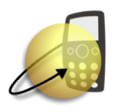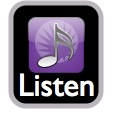Written by: Alex Curtis
Categories: News
New iPhone in town, well, almost in town—July 11 it will be released. Here are a number of quick details we know so far from the WWDC keynote today:
New 3G iPhone Hardware
Memory Capacity: 8GB & 16 GB
Colors: Black and White (White = 16GB option only, unclear if 16GB comes in black as well)
Frequencies: UMTS/HSDPA (850, 1900, 2100 MHz); GSM/EDGE (850, 900, 1800, 1900 MHz); WiFi 802.11b/g; Bluetooth 2.0 + EDR.
Screen Size: 3.5 inches (diagonal), 480 by 320 pixels (163 ppi).
Dimensions: 4.5 by 2.4 by 0.48 inches (115.5 by 62.1 by 12.3 mm)
Camera: 2.0 megapixels
Location Services: Assisted-GPS, previous cell tower and WiFi geolocation services from previous generation iPhone.
The big change is the high-speed 3G data connection, which Apple claims approaches the speeds of WiFi, and for some websites some 2.4 times faster than the original iPhone’s EDGE speeds.
iPhone Software
Besides the hardware specs, there are a number of new anticipated software changes, most of which will be available to current iPhone and iPod touch users via a software upgrade, due in early July. We’ve heard before about the Exchange Server and ActiveSync synchronization to keep your calendar, contacts and emails up to date over the air with your iPhone. Now, the new version of .Mac, called mobileme, will empower the average consumer a number of the same synchronizing functionality, for $99/year, all contacts, calendars, emails, and photos synchronized with the “cloud.”
The iPhone’s Mail app is also upgraded, and lets the the user select multiple messages to delete or move, and can also now view PowerPoint and all iWork (Pages, Keynote, and Numbers) documents. The iPhone’s contacts are also now searchable, so you don’t have to scroll through all of your contacts to find the right person. The Calculator app is now scientific, the new functions reveal themselves when the iPhone is tilted on its side. Language support is also significantly improved, allowing for simplified Chinese, traditional Chinese, and Japanese language support through new keyboard and character recognition input controls.
Last, but probably the most significant software addition to the iPhone platform is the App Store. The App Store allows for third party developers to create and distribute applications to iPhone owners. Apple announced that applications under 10MB could be downloaded over the cellular network and WiFi, and those over 10MB would be available over WiFi only. Apple also announced two additional ways for developers to distribute their apps, via the enterprise via a company’s network or “ad hoc,” which allows for the download of up to 100 copies of an app.
Additionally, it was noted that Apple will be providing developers with a specialized push messaging service, one that would permit applications to receive information from the Internet without having to run in the background. My first take is that while this may be a good thing to prevent the draining of an iPhones battery, it could be problematic from a competitive gateway point of view, as application developers would be required to go through Apple to pass along messages to their app (especially since other apps like Mail have this information automatically pushed without this kind of service, today). I’m sure this new service will be discussed in the days and weeks to come.
That’s the quick and dirty. I’m sure there will be more details soon enough.










